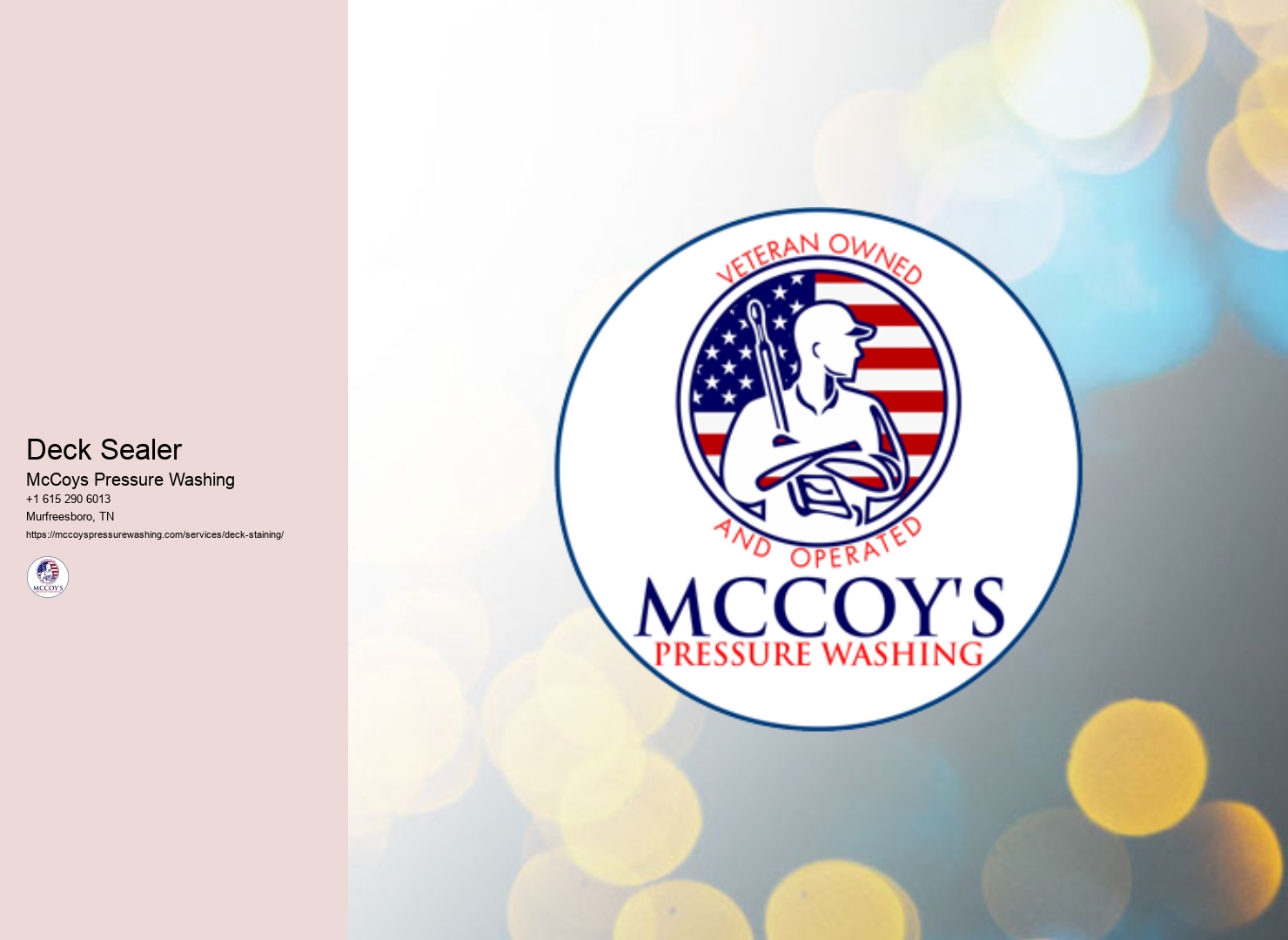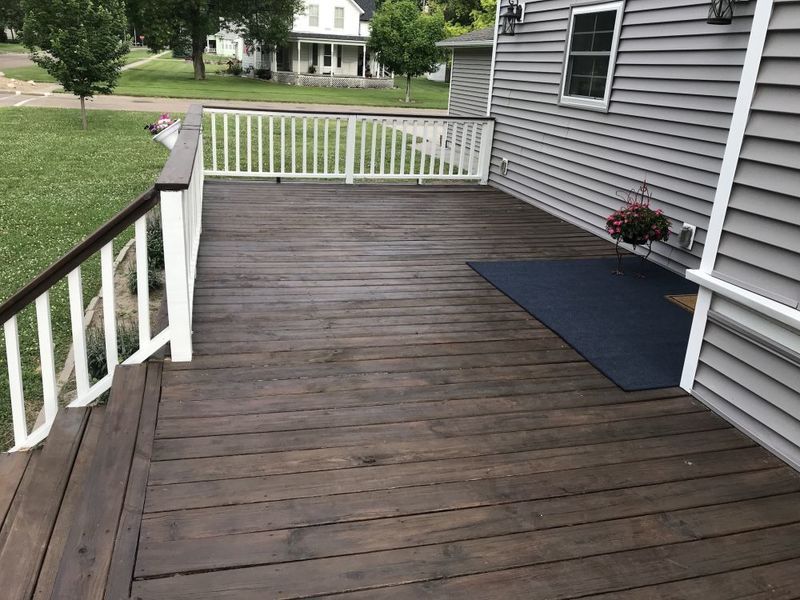
Even if you live in a dry climate, an extreme surface temperature can dry wood out and cause it to crack. Humidity is one of the greatest threats to decks because wood may begin to swell and warp when the boards get soaked in the rain. The winter season can be unforgiving on decks as well.
Deck stains are designed to keep moisture out of your wood while adding visual appeal. The easiest test you can perform to see if you need to reapply stain is to pour some water on the wood and examine the site. If you notice that the water beads and runs off the surface, your deck is still protected.
If the deck isn’t terribly dirty, you might be able to tackle the job with a garden hose in a couple of hours. If the deck requires a bit more work, a pressure washer is probably the right tool for the job. Pressure washing not only removes dirt and grime but also eliminates set-in grime.
It’s something that most homeowners can tackle in a few days spread out over a week or two. When you’re ready to bring the luster back to your deck boards, check the weather and get ready to work. Here’s a step by step guide of how to stain a deck.
Additionally, some products have additives to protect against UV rays and sun damage. Sealing a deck is best for cedar, teak, mahogany, or other quality woods as it enhances the wood grain and natural color. Staining a deck protects the wood from mold, mildew, moisture, and rot, and UV rays and sun damage.
A paint sprayer can make quite a mess, particularly if you aren’t well-practiced with it. Now that the deck is clean, repaired, and (possibly) sanded, it’s time to get to the real work. Start with staining the handrails. I use a brush for these, though of course if you’re using a sprayer, use that instead.
This guide covers the most important things you need to know about deck staining. Most people apply stain both to protect their decking from weather damage and to make the wood vibrant and beautiful. Without stain, the wood can fade under sunlight and moisture can seep into the wood pores.
Roll the stain on with long, even strokes, again trying to blend the lines as much as possible. The hardest part is remembering not to trap yourself. Start in the corner farthest away from the stairs or door, and work your way back to your escape route. You don’t want to have to jump over, or worse, step on an already stained area of the deck when you’re done.
Do the water absorption test…Pour a little water on the deck and if it absorbs it can accept a coating…if it beads up or does not absorb the deck will wood will need to be properly prepared.) Rain, Rain, Go away – It is essential that you check the forecasts before you begin and ensure that it will be a week with good weather.

One of the most important things you can do for your deck is to clean it. Over time, wood decks can develop moss, mold, algae, and grime on the surface that can cause them to darken and look unsightly. Therefore, it is a good idea to clean your decks at least once a year, preferably in the spring when it is dry and temperatures are between 60- and 70-degrees Fahrenheit.
If your deck is in good condition and you’re looking to apply a maintenance coat to keep your deck looking new, then yes… you can stain over a stained deck. If this is the case then make sure you use the exact same product as last time. Don’t try to coat your existing stain with a different brand of deck stain.
This position is not difficult, so invite over a friend, hand them a cold beverage, and attack this process as a team. The big question is whether you’re going to use an oil-based or water-based stain on your deck. For larger surface areas, you may be looking to spray the stain.
Enjoy! – Having a deck is a wonderful thing. All of this work will pay off when you and your loved ones are able to congregate on your masterpiece and enjoy a meal or bask in the sunshine together. Make sure to appreciate your deck by using it as often as possible! .
Weather, organic debris and heavy use can damage your deck’s surface, but regular upkeep may prevent you from having to constantly re-stain your deck. We recommend giving your deck at least one thorough clean each year. Early spring is a good time, just as temperatures begin to warm. In colder climates, this should be after snow has cleared.
This is also the case if you want to put a water based deck stain over an oil based deck stain. These products were never designed to work on top of each other. Water based products won’t stick to an oil based coating. By trying to cut corners, you’ll end up with a deck that looks ugly and will peel and fade within 3 to 6 months… Any blemishes in your current oil based coating will not be masked by the water based product.

This coating won’t wear out as often – probably only every 2-3 years or so, depending on how much use it sees. Solid color stains look very similar to flat paints when applied, so the wood grain will be covered. This will give you the best protection for your deck because they provide a long-lasting, durable finish.
Staining your deck is the number-one way to keep the wood from rotting due to mold, termites or mildew. Once your deck begins to rot, there’s no real way to stop it. Not only is rot unsightly, but it’s also a safety hazard as it could cause your deck to collapse.
Credit: Reviewed / Jesse Flores / Behr / Kingorigin If you didn't use a paint sprayer, this is the best and most effective way to do it. Now it’s time for the main event: Staining the deck boards. Again, you can use a paint sprayer for this, but be careful, as it can make a mess.
Many experts suggest that a stain pad is the easiest and results in the smoothest finish. All these items can be found at any home improvement store and many times, simple start kits provide everything you need in a single package. As you apply the stain, take your time and keep in mind that more is not always better.
If you’ve had your deck for some time and it is starting to show signs of wear, it may be a good idea to paint it. Start by cleaning away the accumulated grime on the deck (using the process outlined above). Once your deck is clean, you may want to apply borate to prevent algae and other microorganisms from building up on your deck.
Once you’ve selected a color, it is time to choose the product that best suits your needs. There are many stains available; however, they all have different uses and characteristics. So be sure to do some research before making any decisions about which one will work for what type of situation! A lot of people are happy to maintain that natural wood look and will decide on a clear protective sealer.
